You need to build a links data frame that conforms to the style 'source', 'target', .... In your case, each successive column (other than the VALUE column) is the target of the previous column. You can reshape your data by by inferring the order of each step from the order of each column...
library(networkD3)
library(dplyr)
library(tidyr)
df <- data.frame(PROD = c("A","A","A","A"),
REJECT = c("YES","YES","NO","NO"),
ALT_PROD = c("A","B","C","D"),
VALUE = c(100,50,400,500))
links <-
df %>%
as_tibble() %>%
mutate(row = row_number()) %>%
pivot_longer(cols = c(-row, -VALUE),
names_to = 'column', values_to = 'source') %>%
mutate(column = match(column, names(df))) %>%
mutate(source = paste0(source, '__', column)) %>%
group_by(row) %>%
mutate(target = lead(source, order_by = column)) %>%
drop_na(target, source) %>%
group_by(source, target) %>%
summarise(value = sum(VALUE), .groups = 'drop')
nodes <- data.frame(name = unique(c(links$source, links$target)))
links$source <- match(links$source, nodes$name) - 1
links$target <- match(links$target, nodes$name) - 1
nodes$name <- sub('__[0-9]+$', '', nodes$name)
sankeyNetwork(Links = links, Nodes = nodes, Source = "source",
Target = "target", Value = "value", NodeID = "name")
to make the process more clear, here's what the links data frame you need to build looks like after each significant step in the process...
df %>%
as_tibble() %>%
mutate(row = row_number())
#> # A tibble: 4 x 5
#> PROD REJECT ALT_PROD VALUE row
#> <chr> <chr> <chr> <dbl> <int>
#> 1 A YES A 100 1
#> 2 A YES B 50 2
#> 3 A NO C 400 3
#> 4 A NO D 500 4
df %>%
as_tibble() %>%
mutate(row = row_number()) %>%
pivot_longer(cols = c(-row, -VALUE),
names_to = 'column', values_to = 'source')
#> # A tibble: 12 x 4
#> VALUE row column source
#> <dbl> <int> <chr> <chr>
#> 1 100 1 PROD A
#> 2 100 1 REJECT YES
#> 3 100 1 ALT_PROD A
#> 4 50 2 PROD A
#> 5 50 2 REJECT YES
#> 6 50 2 ALT_PROD B
#> 7 400 3 PROD A
#> 8 400 3 REJECT NO
#> 9 400 3 ALT_PROD C
#> 10 500 4 PROD A
#> 11 500 4 REJECT NO
#> 12 500 4 ALT_PROD D
df %>%
as_tibble() %>%
mutate(row = row_number()) %>%
pivot_longer(cols = c(-row, -VALUE),
names_to = 'column', values_to = 'source') %>%
mutate(column = match(column, names(df))) %>%
mutate(source = paste0(source, '__', column))
#> # A tibble: 12 x 4
#> VALUE row column source
#> <dbl> <int> <int> <chr>
#> 1 100 1 1 A__1
#> 2 100 1 2 YES__2
#> 3 100 1 3 A__3
#> 4 50 2 1 A__1
#> 5 50 2 2 YES__2
#> 6 50 2 3 B__3
#> 7 400 3 1 A__1
#> 8 400 3 2 NO__2
#> 9 400 3 3 C__3
#> 10 500 4 1 A__1
#> 11 500 4 2 NO__2
#> 12 500 4 3 D__3
df %>%
as_tibble() %>%
mutate(row = row_number()) %>%
pivot_longer(cols = c(-row, -VALUE),
names_to = 'column', values_to = 'source') %>%
mutate(column = match(column, names(df))) %>%
mutate(source = paste0(source, '__', column)) %>%
group_by(row) %>%
mutate(target = lead(source, order_by = column))
#> # A tibble: 12 x 5
#> # Groups: row [4]
#> VALUE row column source target
#> <dbl> <int> <int> <chr> <chr>
#> 1 100 1 1 A__1 YES__2
#> 2 100 1 2 YES__2 A__3
#> 3 100 1 3 A__3 <NA>
#> 4 50 2 1 A__1 YES__2
#> 5 50 2 2 YES__2 B__3
#> 6 50 2 3 B__3 <NA>
#> 7 400 3 1 A__1 NO__2
#> 8 400 3 2 NO__2 C__3
#> 9 400 3 3 C__3 <NA>
#> 10 500 4 1 A__1 NO__2
#> 11 500 4 2 NO__2 D__3
#> 12 500 4 3 D__3 <NA>
df %>%
as_tibble() %>%
mutate(row = row_number()) %>%
pivot_longer(cols = c(-row, -VALUE),
names_to = 'column', values_to = 'source') %>%
mutate(column = match(column, names(df))) %>%
mutate(source = paste0(source, '__', column)) %>%
group_by(row) %>%
mutate(target = lead(source, order_by = column)) %>%
drop_na(target, source)
#> # A tibble: 8 x 5
#> # Groups: row [4]
#> VALUE row column source target
#> <dbl> <int> <int> <chr> <chr>
#> 1 100 1 1 A__1 YES__2
#> 2 100 1 2 YES__2 A__3
#> 3 50 2 1 A__1 YES__2
#> 4 50 2 2 YES__2 B__3
#> 5 400 3 1 A__1 NO__2
#> 6 400 3 2 NO__2 C__3
#> 7 500 4 1 A__1 NO__2
#> 8 500 4 2 NO__2 D__3
df %>%
as_tibble() %>%
mutate(row = row_number()) %>%
pivot_longer(cols = c(-row, -VALUE),
names_to = 'column', values_to = 'source') %>%
mutate(column = match(column, names(df))) %>%
mutate(source = paste0(source, '__', column)) %>%
group_by(row) %>%
mutate(target = lead(source, order_by = column)) %>%
drop_na(target, source) %>%
group_by(source, target) %>%
summarise(value = sum(VALUE), .groups = 'drop')
#> # A tibble: 6 x 3
#> source target value
#> <chr> <chr> <dbl>
#> 1 A__1 NO__2 900
#> 2 A__1 YES__2 150
#> 3 NO__2 C__3 400
#> 4 NO__2 D__3 500
#> 5 YES__2 A__3 100
#> 6 YES__2 B__3 50

